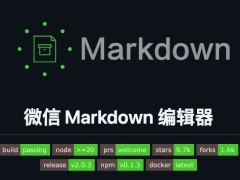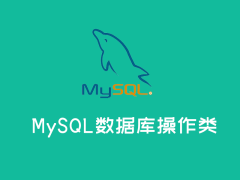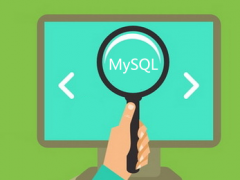1、更新
sudo apt-get update
2、安装nginx
sudo apt-get intsall nginx
Ubuntu安装之后的文件结构大致为:
* 所有的配置文件都在/etc/nginx下,并且每个虚拟主机已经安排在了/etc/nginx/sites-available下
*程序文件在/usr/sbin/nginx * 日志放在了/var/log/nginx中
*并已经在/etc/init.d/下创建了启动脚本nginx
* 默认的虚拟主机的目录设置在了/var/www/nginx-default
下面可以启动nginx来看看效果(请确保80端口没有其他服务在使用):
sudo /etc/init.d/nginx start
#或者简单的
service nginx start
然后打开浏览器,查看http://localhost/ 看看是否看到了”Welcome to nginx!” 如果看到了,说明安装成功.
当然,基本上,这块儿都不会出问题. 如果运行不成功,可以先
sudo killall apache2
杀掉apache进程
3、安装php
sudo apt-get install php5 php5-cgi php5-mysql php5-curl php5-gd php5-idn php-pear php5-imagick php5-imap php5-mcrypt php5-memcache php5-mhash php5-ming php5-pspell php5-recode php5-snmp php5-tidy php5-xmlrpc php5-sqlite php5-xsl
4、安装spawn-fcgi
为什么要安装spawn-fcgi呢,它用来控制php-cgi进程,以防止进程崩溃或是单进程的效率太低.
网上很多人都说要使用spawn-fcgi必须得安装lighttpd,实际上不必要,可以直接安装spawn-fcgi
运行:
sudo apt-get install spawn-fcgi
5、配置
接下来就是最让人头疼的配置.
配置Nginx和spawn-fcgi配合运行
(1).在/etc/nginx/fastcgi_params 文件最后,加入一行,可以用
sudo vi /etc/nginx/fastcgi_params
加入此行:
fastcgi_param SCRIPT_FILENAME $document_root$fastcgi_script_name;
(2).另外需要在PHP-CGI的配置文件(Ubuntu 上此配置文件位于/etc/php5/cgi/php.ini)中,找到cgi.fix_pathinfo选项,修改为:
cgi.fix_pathinfo=1;
这样php-cgi方能正常使用SCRIPT_FILENAME这个变量.
(3).打开/etc/nginx/sites-available/default文件在
server {
listen 80;
server_name localhost;
下面添加web根目录的绝对地址,这里是使用的是nginx的默认地址
root /var/www/nginx-default
即root和server_name同级这段即相当于apache的默认目录
如果没有这个的话,容易在执行php 文件的时候,会提示”No input file specified”.
我就曾在此绕了好大个圈子才发现问题.然后修改
#location ~ .php$ {
#fastcgi_pass 127.0.0.1:9000;
#fastcgi_index index.php;
#fastcgi_param SCRIPT_FILENAME /scripts$fastcgi_script_name;
#includefastcgi_params;
#}
修改成
location ~ .php$ {
fastcgi_pass 127.0.0.1:9000;
fastcgi_index index.php;
fastcgi_param SCRIPT_FILENAME /var/www/nginx-default$fastcgi_script_name;
include /etc/nginx/fastcgi_params; #包含fastcgi的参数文件地址
6、开始fast_cgi进程
1、sudo /usr/bin/spawn-fcgi -a 127.0.0.1 -p 9000 -C 5 -u www-data -g www-data -f /usr/bin/php5-cgi -P /var/run/fastcgi-php.pid
7、设置开机启动fastcgi进程并启动
sudo vi /etc/rc.local
添加下一行
/usr/bin/spawn-fcgi -a 127.0.0.1 -p 9000 -C 5 -u www-data -g www-data -f /usr/bin/php5-cgi -P /var/run/fastcgi-php.pid
如果打开php文件出现:No input file specified请检查php.ini的配置中
cgi.fix_pathinfo=1
doc_root=
还有,每个虚机要根据自己不同的虚机设置不同的目录,要保证这个路径正确.
检查/etc/nginx/sites-available下的配置文件中,server内包含 root 及地址 而非location内的root
启动
fast-cgisudo /usr/bin/spawn-fcgi -a 127.0.0.1 -p 9000 -C 5 -u www-data -g www-data -f /usr/bin/php5-cgi -P /var/run/fastcgi-php.pid
参数含义如下
* -f 指定调用FastCGI的进程的执行程序位置,根据系统上所装的PHP的情况具体设置
* -a 绑定到地址addr
* -p 绑定到端口port
* -s 绑定到unix socket的路径path
* -C 指定产生的FastCGI的进程数,默认为5(仅用于PHP)
* -P指定产生的进程的PID文件路径
* -u和-g FastCGI使用什么身份(-u 用户 -g 用户组)运行,Ubuntu下可以使用www-data,其他的根据情况配置,如nobody、apache等现在可以在web根目录下放个探针或php文件测试一下了
8、安装mysql
sudo apt-get install mysql-server mysql-client
中间会提示输入Root用户密码,依次输入即可.
启动MySQL
sudo /etc/init.d/mysql start
测试mysql服务是否正常:
运行
mysql -uroot -p
输入mysql密码
show databases;
如果看到下面的内容
| Database |
| information_schema |
| mysql |
则mysql已正确安装了.
至此,ubuntu下的nginx+php+mysql就安装完成了。配置host文件在:/etc/hosts
















